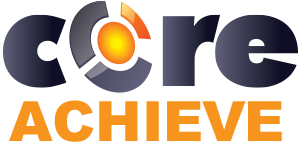Addressing the Needs of Remote Learners in Your LMS
June, 09 2023
Other posts:
Enhancing Team Dynamics for Effective Group Decision-Making with LMS Integration
Organizations increasingly rely on collaborative efforts to solve complex problems, innovate, and adapt to change, but how do we ensure that collaboration is happening.
Maximizing Small Business Potential with Training Technology
Training technologies can push small businesses ahead of their competitors, but what are the factors that go into choosing the right technology?
Unlocking Employee Potential: The Transformative Benefits of an Interactive Learning Management System (LMS)
Interactive training allows for unlocking employee potential, but how is it done?
Building a Robust Sales Pipeline with Training
Every organization wants a streamlined sales pipeline, but building one requires a series of interlocking activities with one of the most important being training.
Strategies for Adapting In-Person Training to Online Platforms
Online training is one of the most flexible ways of delivering training across organizations, but how do you even begin to adapt in-person training into online?
About 35% of the workforce is now fully remote
In today's age of digitization, connections, and global events, remote learning has become increasingly prevalent, allowing learners to access educational resources and training materials from anywhere in the world. As organizations embrace remote work and virtual learning environments, it is crucial to address the unique needs and challenges faced by remote learners. By leveraging a Learning Management System (LMS) effectively, organizations can create a supportive and engaging learning experience for remote learners.
The strategies and best practices for using an LMS for remote training will vary depending on the goals of the organization. For example, training someone for the necessary information like compliance will be completely different than using an LMS for continuous learning. As such, there will be an effort to make it clear which need falls under what category.
Seamless Accessibility
One of the primary considerations when catering to remote learners is ensuring seamless accessibility to the LMS platform. The LMS should be cloud-based, allowing learners to access it from any device with an internet connection. Moreover, it should have a responsive design, optimizing the learning experience across various devices, including desktops, laptops, tablets, and smartphones. By making the LMS easily accessible, organizations can remove barriers and enable remote learners to engage with the learning content anytime and anywhere.
The ability to access an LMS platform from anywhere on any device and at any time, is essential to all remote learners, regardless of organizational goals. Remote workers’ equipment may vary, leading to potential conflicts if an LMS is built for only one platform.
Clear Communication Channels
Remote learners often face challenges in terms of communication and collaboration. Establishing clear communication channels within the LMS is essential to foster engagement and interaction. Incorporate features like discussion forums, chat functionalities, and video conferencing tools to facilitate real-time communication among learners and instructors. By providing opportunities for virtual discussions, remote learners can ask questions, share insights, and engage in meaningful dialogue, creating a sense of community and enhancing the learning experience.
This is most beneficial for essential training as remote learners can, while learning, start getting used to the norms of how the organization communicates and begin fostering a sense of community.
Engaging Multimedia Content
To keep remote learners engaged and motivated, it is crucial to present content in a variety of formats. Leverage multimedia elements such as videos, interactive modules, podcasts, and infographics to make the learning experience more dynamic and immersive. By incorporating engaging multimedia content, organizations can cater to different learning preferences and enhance knowledge retention among remote learners.
Any organization should strive to include a variety of content for their remote learners as being remote can often lead to increased boredom or lesser motivation.
Personalized Learning Paths
Remote learners have diverse backgrounds, skill levels, and learning objectives. To address their individual needs, organizations should implement personalized learning paths within the LMS. Provide learners with the ability to customize their learning journey by offering a range of courses, modules, and assessments that align with their goals. Additionally, utilize data analytics within the LMS to track learner progress and recommend relevant resources, ensuring remote learners receive tailored learning experiences.
Learning paths are a great way to increase engagement and a pillar of a continuous learning environment. Mandatory training, like compliance, most likely will not have many different pathways. Beyond that, giving learners options in a continuous learning environment will have them more interested in the learning.
Continuous Support and Feedback
Remote learners may require additional support and feedback due to the absence of immediate face-to-face interaction. Establish mechanisms for ongoing support, such as virtual office hours, email assistance, or dedicated support forums. Encourage instructors and trainers to provide timely feedback on assignments and assessments, fostering a sense of connection and motivation for remote learners. Additionally, incorporating self-assessment tools within the LMS allows learners to gauge their progress and identify areas for improvement independently.
Microlearning
To enhance engagement and knowledge retention among remote learners, consider integrating microlearning principles into the LMS. Microlearning, with its bite-sized and focused content, aligns well with the often-fragmented schedules of remote learners, allowing them to access learning materials in short, digestible modules.
Microlearning is extremely effective whenever it comes to continuous learning, especially because most organizations will do necessary training over a couple of days rather than spreading it out.
As remote learning continues to grow, it is crucial for organizations to address the unique needs of remote learners in their LMS implementation. By ensuring seamless accessibility, fostering clear communication channels, incorporating engaging multimedia content, providing personalized learning paths, offering continuous support and feedback, and microlearning, organizations can create a supportive and engaging learning environment for remote learners. By embracing these strategies, organizations can empower remote learners to acquire knowledge, develop skills, and thrive in virtual learning spaces.
Get started with CoreAchieve today for free.
Photo by Brooke Cagle on Unsplash

Leave comment: